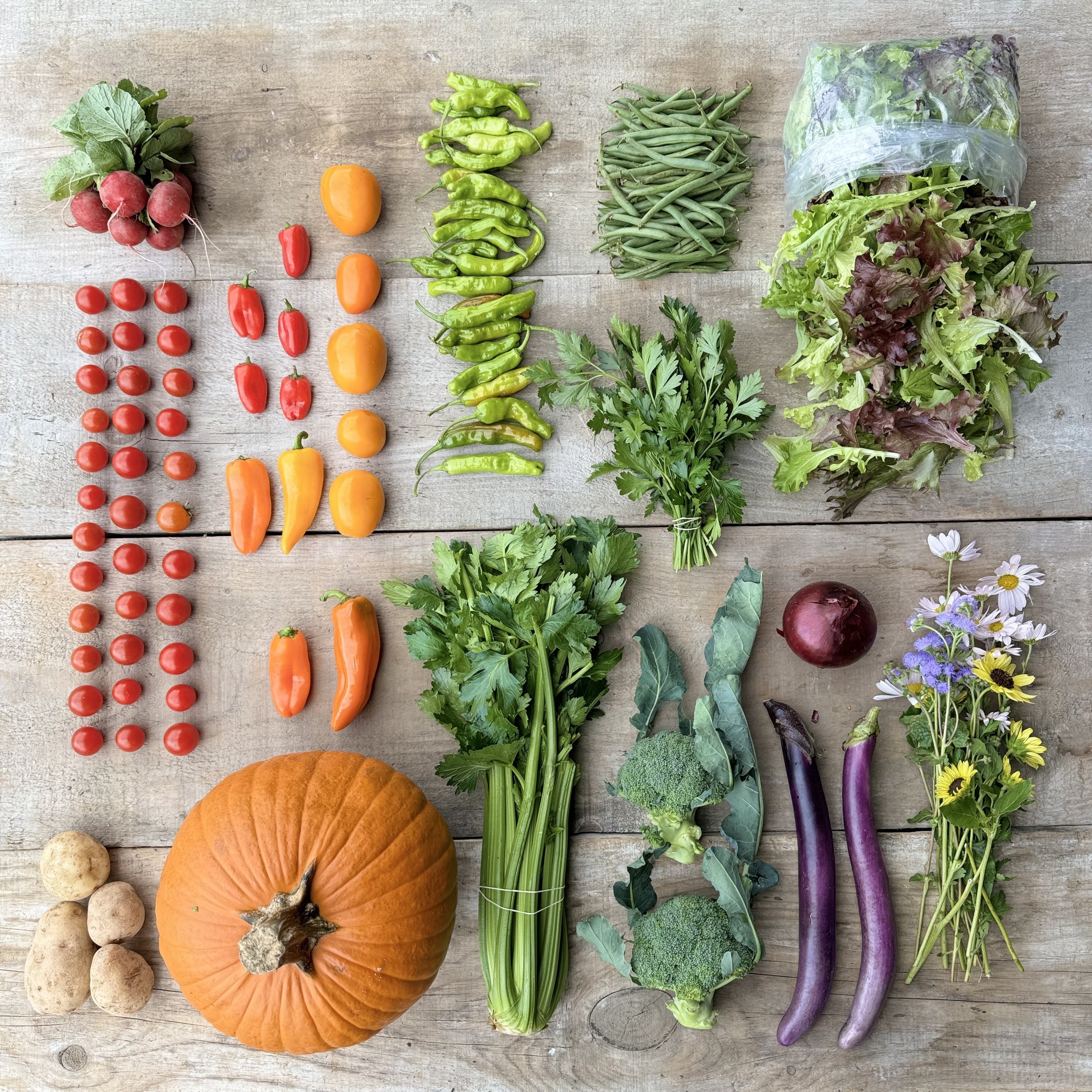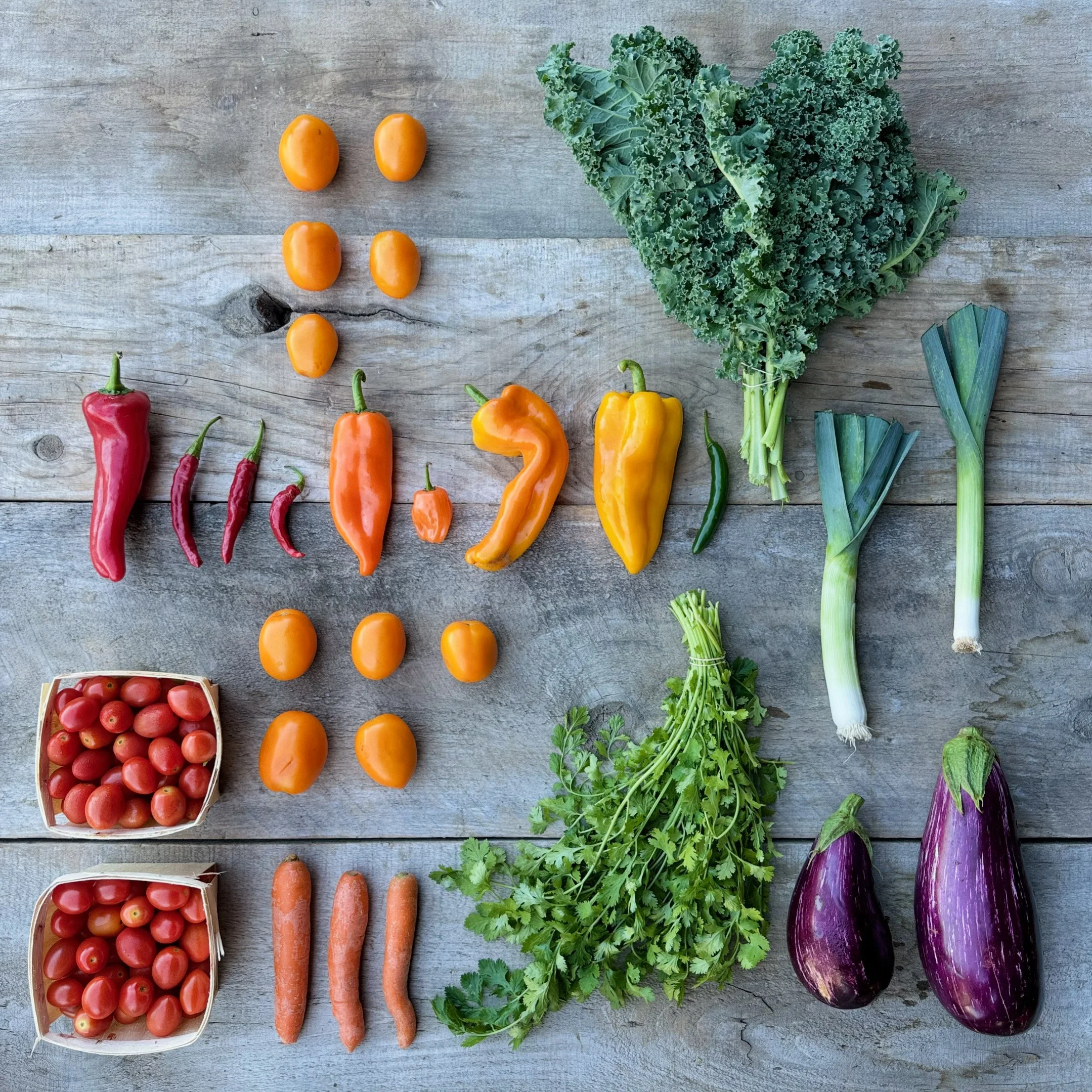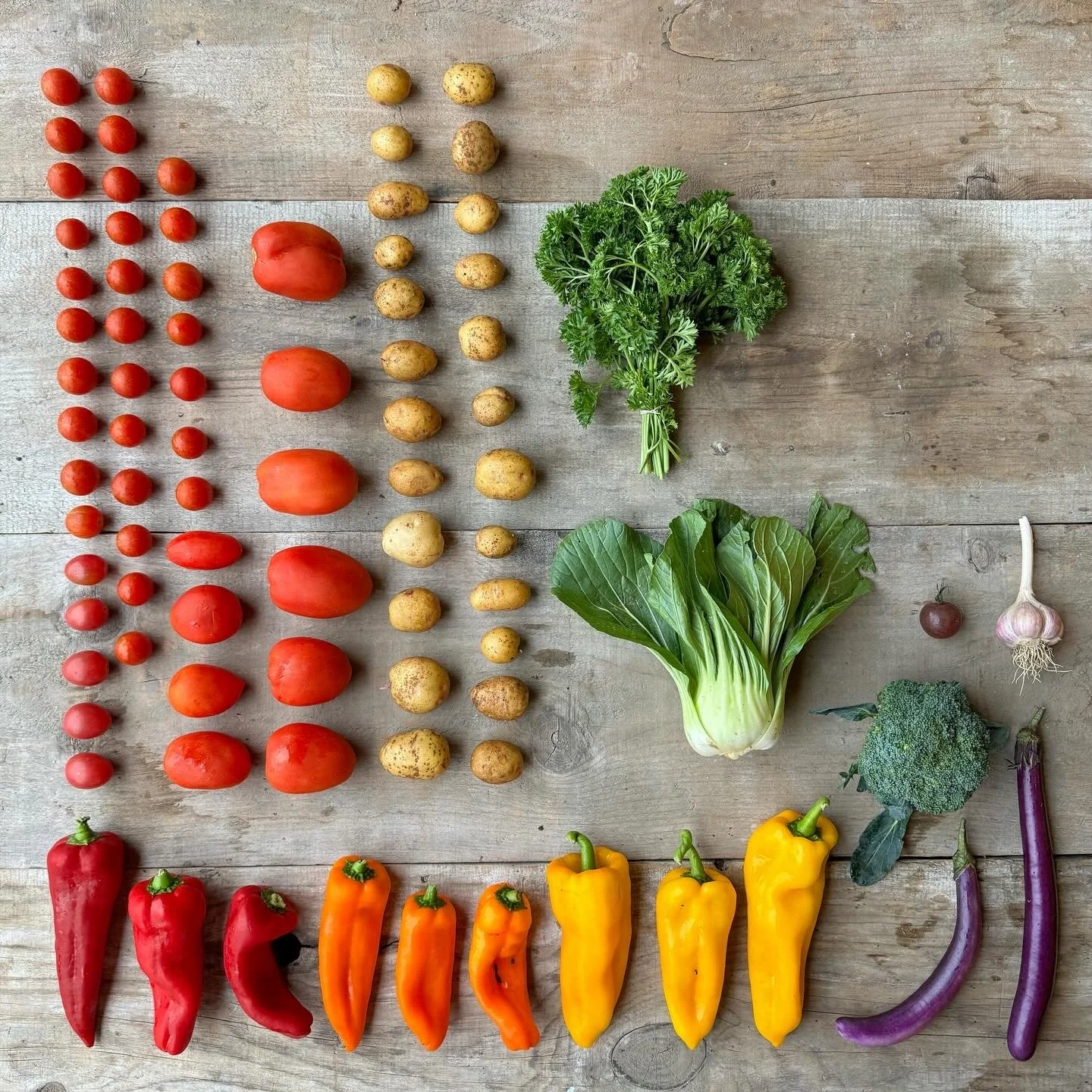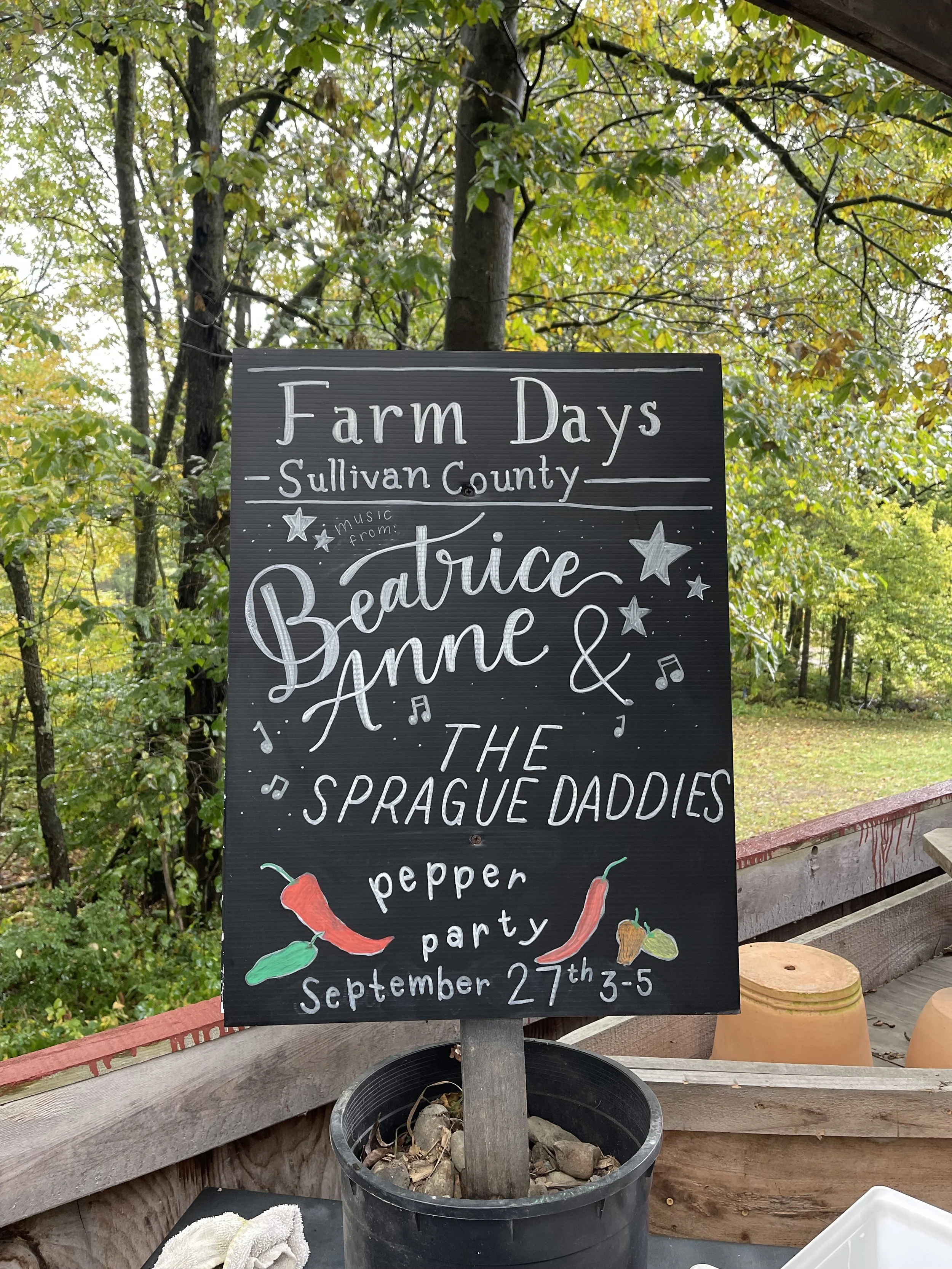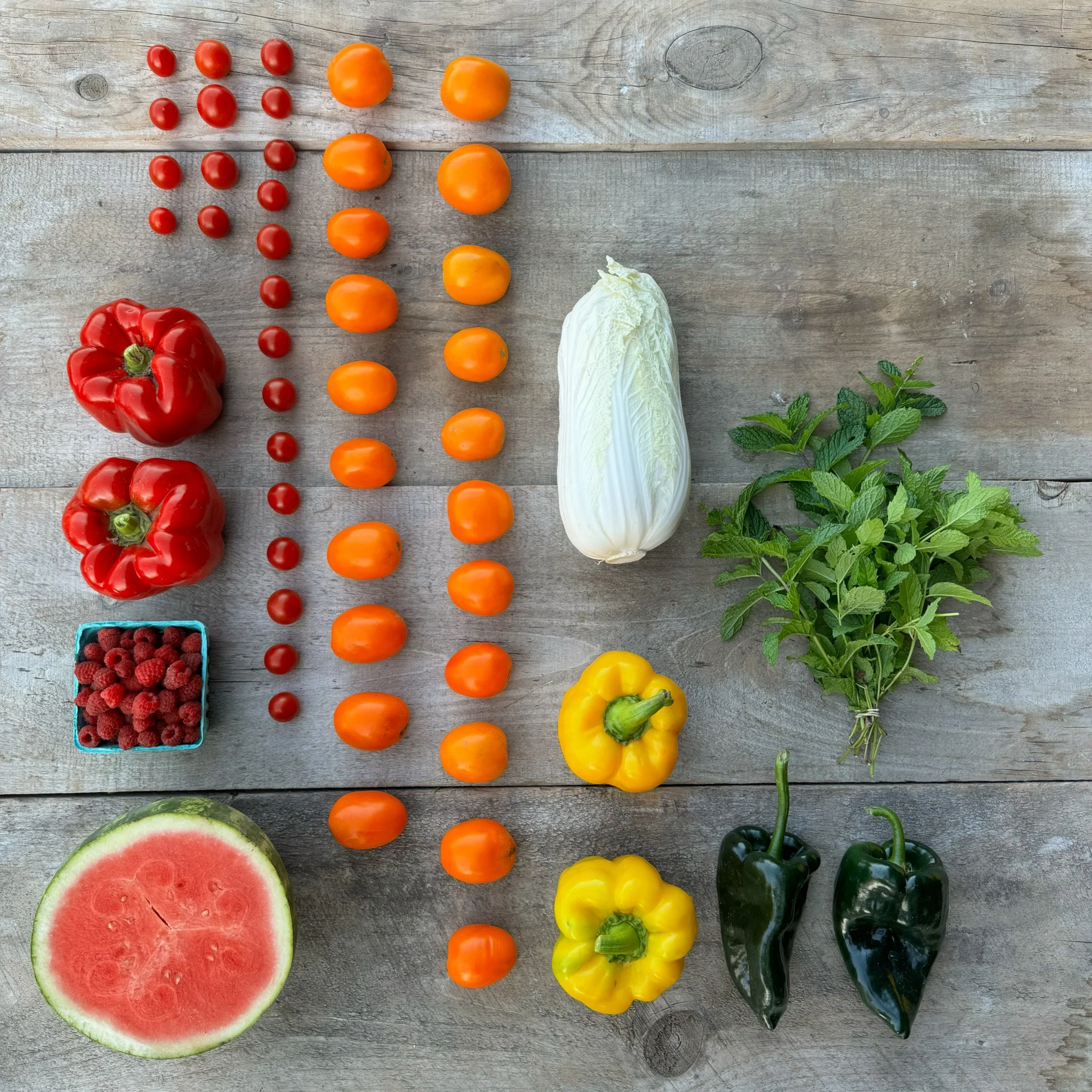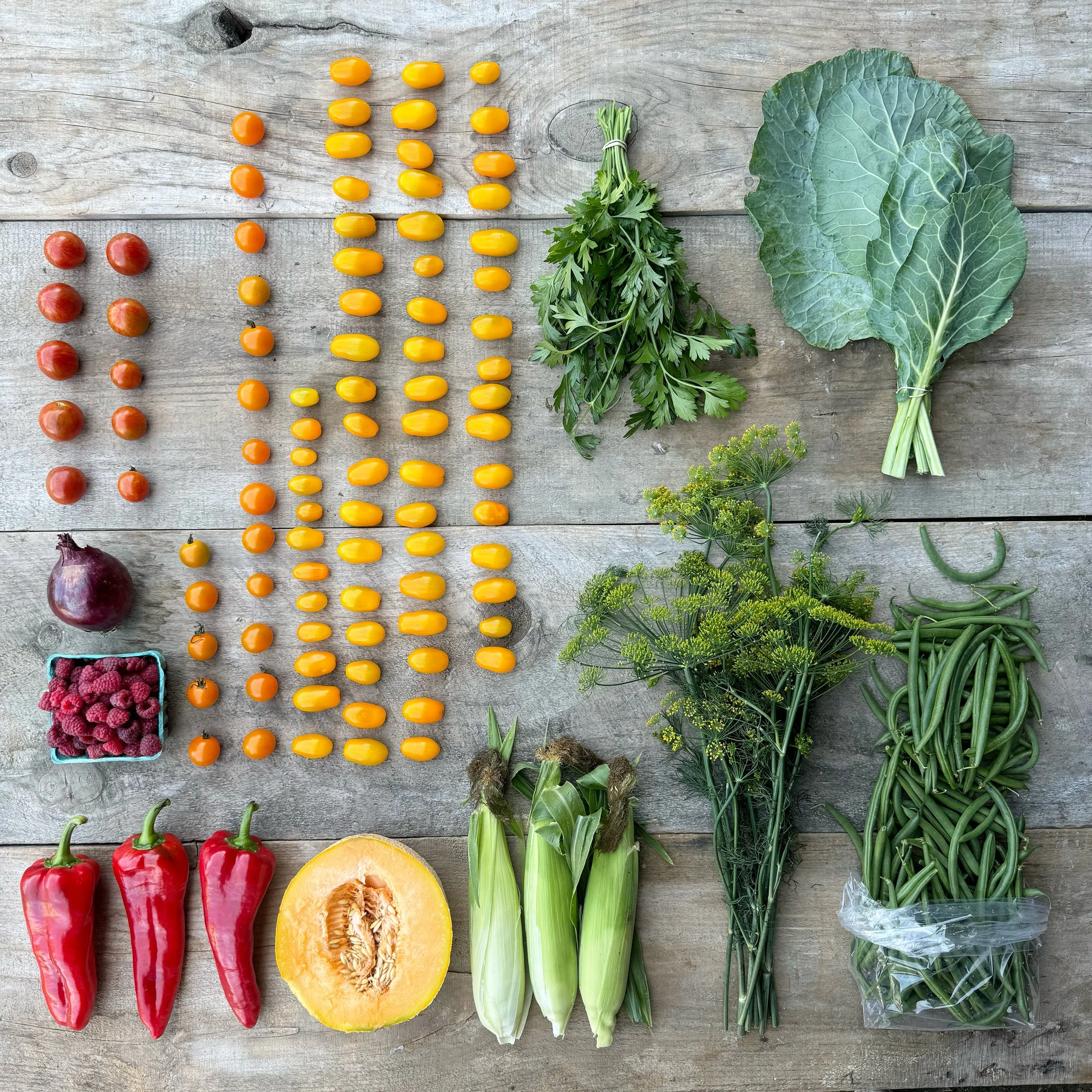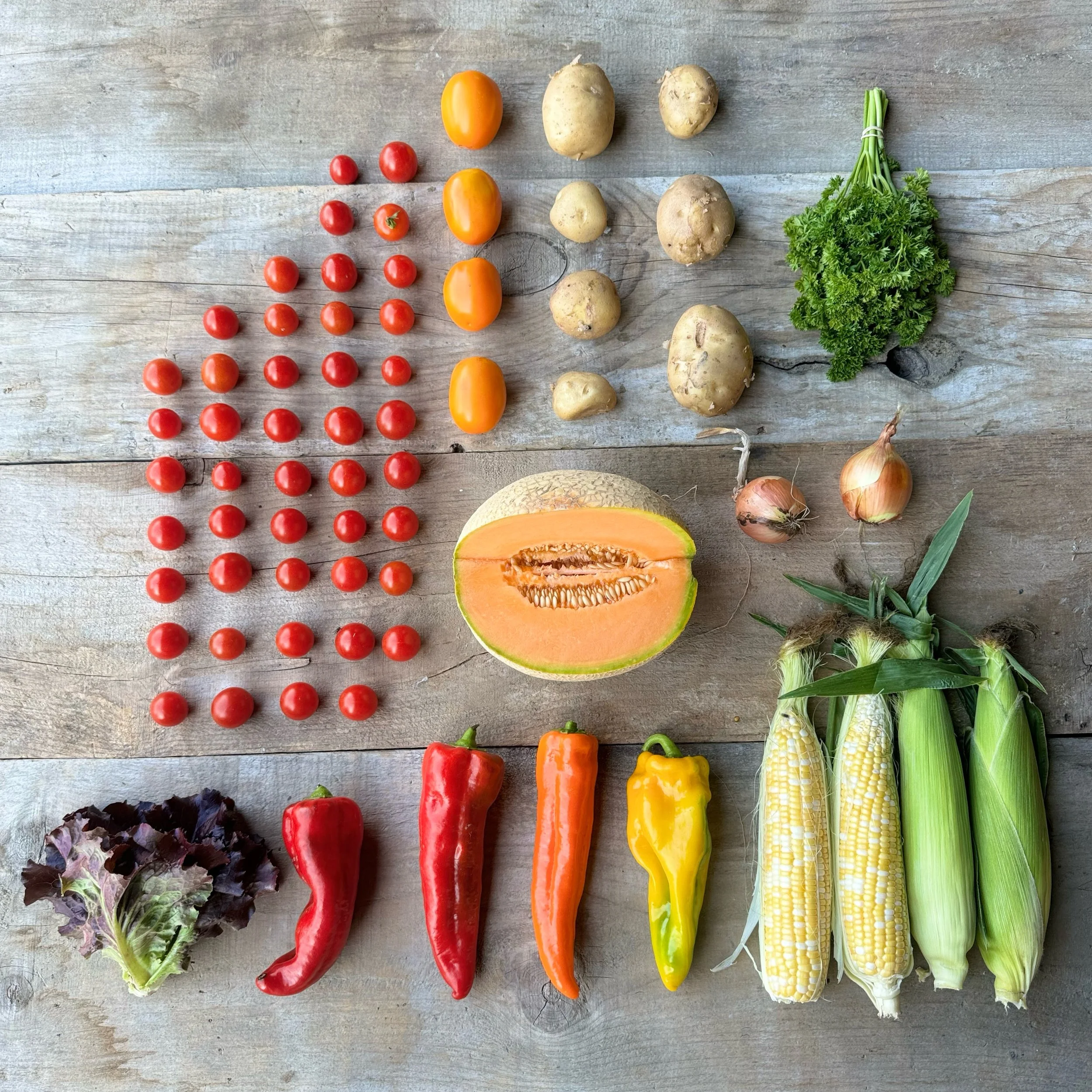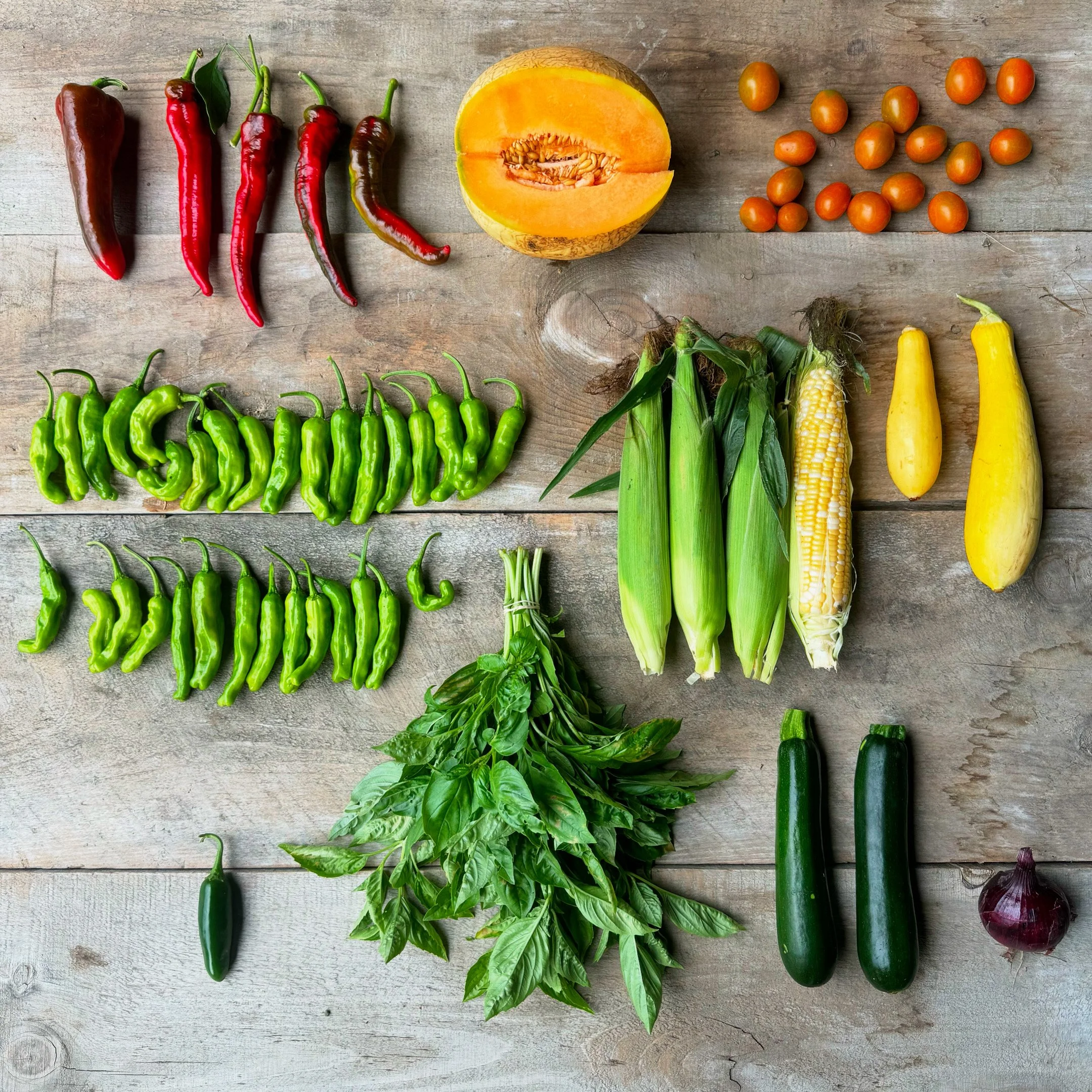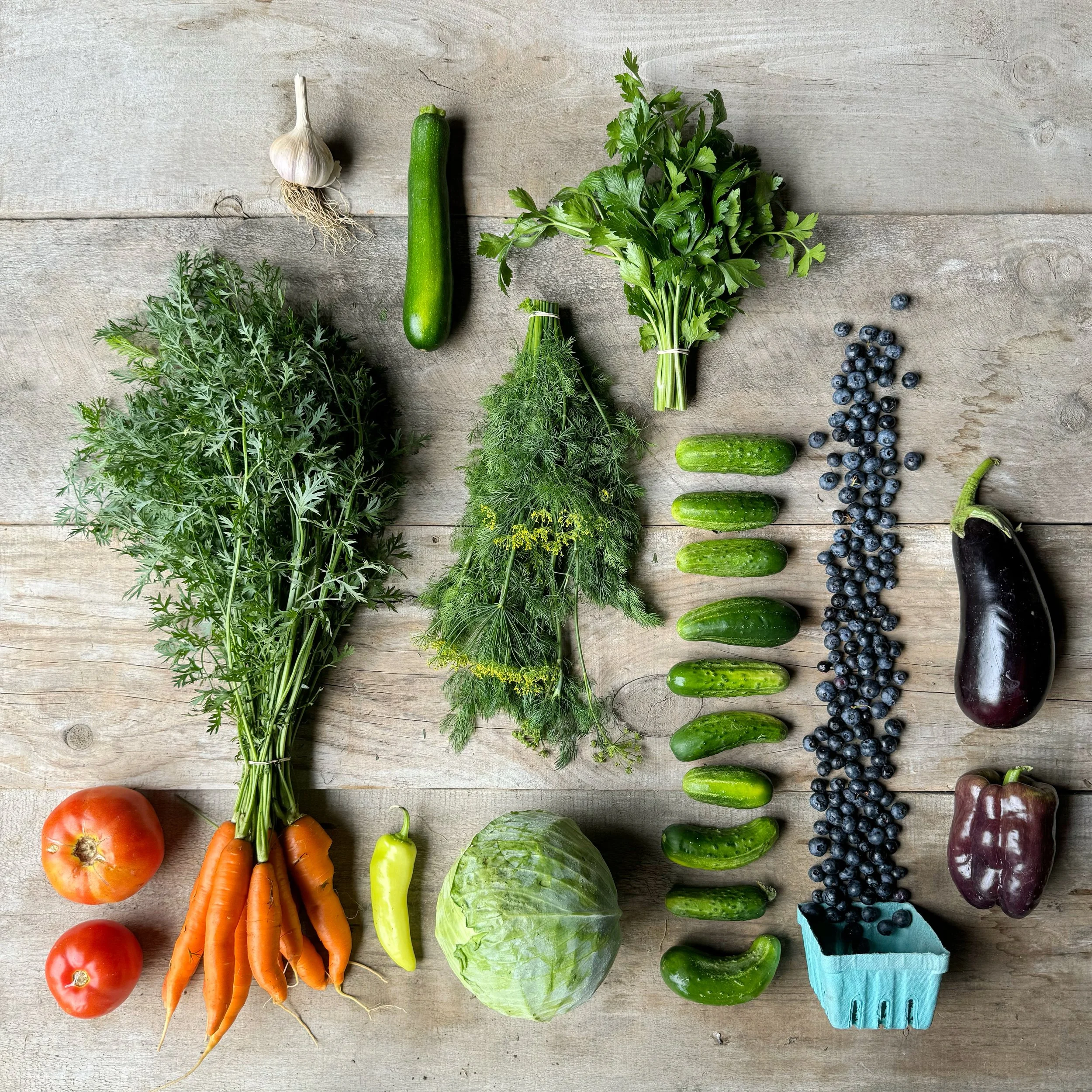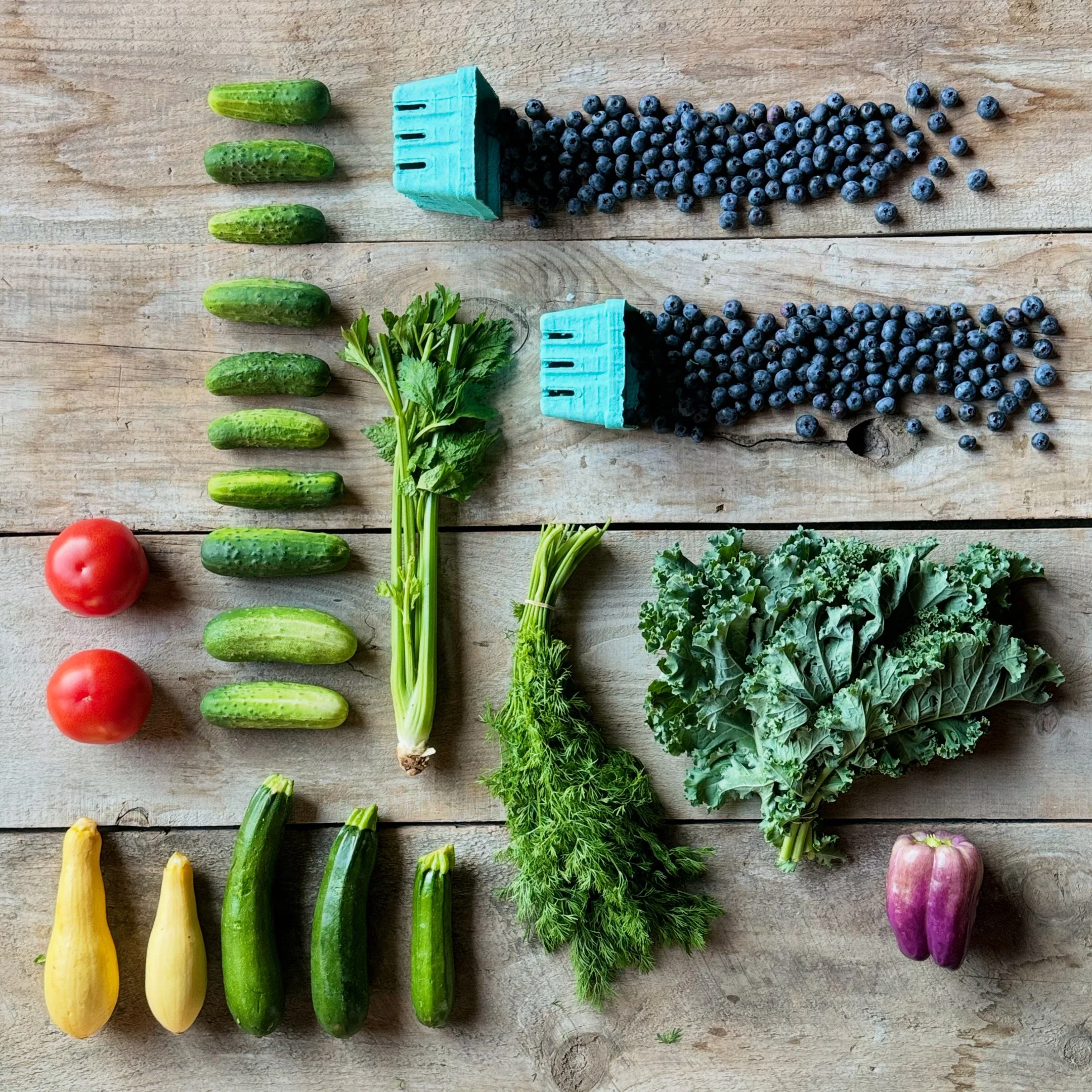P i c k l i s t
GOLDEN ROMA TOMATOES - CARMEN PEPPERS - CARROTS - POTATOES - BRUSSEL SPROUTS - MIZUNA GREENS - HAKURAI TURNIPS - ONION - LETTUCE - PARSLEY
KITCHEN SHARE: CONFIT - BEET HUMMUS - EGGPLANT DIP W RED PEP JELLY
BREAD SHARE: POBLANO CORN BREAD
Edgewater update:
This was a real hold your breath sort of week as we waited to hear stories from Hurricane Melissa. If you’ve been reading emails and checking out the CSA blog, then you are as up-to-date on what's going on back in Jamaica with our extended crew family as I am. One side note I keep on circling back to during this time is the magnitude of the event and how intense it was. 184 mph winds are totally unprecedented. This wind force and why it was so dramatic had to do with the rising ocean temps etc… This is also not the first "unprecedented" climate event we’ve had this year. We really are existing during a climate crisis. Every year there are multiple events that are so dramatic and feel more dire than the next. This is gonna keep on happening people.
Go fund me’s and cash donations are really helpful. They are truly used to rebuild homes and buy supplies, and make people comfortable as they put pieces of their lives back together. Folks on the ground are so grateful and I am so moved by everyone’s generosity. But it’s a bandaid for a greater problem. The climate crisis will not be solved at a CSA pick up, but rather something to consider as we head into each new season and each new year. These weather events are certainly something to brace for. One thing I see here, in our town and in our region, is a community that really loves each other and will give an assist when times are tough and the storm hits. Yall really know how to show up. It is so powerful and it’s the beauty of the collective and I am so grateful to be a part of it, AND this moment bears nuance as there is greater work to do.
As mentioned in the morning email, Strong Henderson went home to Jamaica yesterday. Roy, Jasper, and Georgie will leave in the next week. The crew is filled in on the outpour of support yall are lending, and it means so much, Cheers.
In other farm news, the weather for the week looks totally dreadful and wintry and stick season appropriate. Therefore we’ve been harvesting as much as we can outside in the fields this week before we start poking around greenhouses to see what’s growing inside. The Brussels sprouts, the mizuna, the hakurais and the lettuce were all harvested yesterday in the on again/off again sunshine with the wind dominating all thoughts. The potatoes, carrots, peppers, and onions are from our fancy storage collection, and will there be bonus herbs today? We shall see!
OH OH! Added last minute bonus, a lisianthus flower stem! If kept in clean water, this little bloom should keep that seasonal depression at bay for weeks… days?
MORE FARMY FOODIE PRO-TIPS:
MIZUNA, what is it? Mizuna is a leafy mustard green that is very popular in parts of Asia. It is particularly popular in Chinese and Japanese vegetable gardens and cuisine. It is excellent both eaten fresh or braised. It has that horseradishy mustard taste to it. Mizuna keeps beautifully for a week or so when refrigerated and stored in a ziploc bag. Come November it becomes a staple in my house because of its flavor and versatility. Braise it/ add it to eggs/ loves to be in a frittata/ stir fry/ excellent fresh chopped in a salad, etc…
The following recipes were crafted specifically for this week’s CSA by our friend and hyper local chef (he lives just up the road), Mitchell Davis. if you are curious about alllll the recipes he has to offer, check out his substack:
Shredded Brussels Sprouts with Bacon
This is a simple side dish that is always on our Thanksgiving table.
Serves 5 to 6
3 tablespoons extra-virgin olive oil, vegetable oil, butter, or bacon grease
2 ounces bacon, diced
1 medium onion, thinly sliced
Salt
2 pounds brussels sprouts, rinsed and drained.
1/2 cup dry white wine, stock, or water
Freshly ground black pepper
Chopped fresh parsley
In a large, heavy frying pan, heat the olive oil over medium-high heat. Add the diced bacon and cook until the fat renders into the pan. Add the sliced onion and a pinch of salt and sauté until the onion is wilted. While the onion is cooking, prepare the brussels sprouts. You want to slice them as thinly as possible, which you can do but cutting them in half lengthwise, placing them cut side down on a cutting board, and slicing them like an onion. Alternately you can use a mandolin or food processor fitted with a slicing blade. As the sprouts are sliced, add them to the pan, stirring to coat with the fat. Continue until all of the sprouts have been added. Add a generous pinch of salt. Pour in the wine or stock and cook until evaporated. Season with black pepper and serve with a sprinkling of parsley.
Indian Carrot (or Turnip) Salad
1 pound carrots, shredded, or hakurei turnips, julienned
2 tablespoons vegetable oil
1/2 teaspoon black mustard seeds
1/2 teaspoon cumin seeds
1/2 teaspoon salt
1/2 teaspoon sugar
Pinch turmeric
Juice of 1 lemon
Handful chopped cilantro
Place the carrots or turnips in a medium bowl. In a small frying pan, heat the oil. Add the mustard and cumin seeds. When the mustard seeds begin to pop, add the salt, sugar, and turmeric. Cool for five minutes. Add the lemon juice and toss with the carrots or turnips. Let sit for 30 minutes. Stir in the cilantro and serve.








